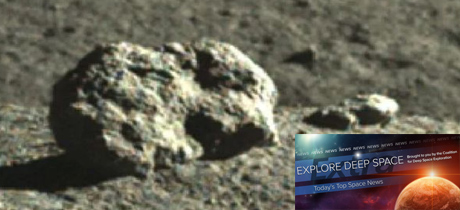In Today’s Deep Space Extra… NASA’s Aerospace Safety Advisory Panel issued its annual report on Tuesday. The InSight Lander has entered a safe mode, temporarily suspending its studies of the Martian mantle and core.
Human Space Exploration
Safety Panel: NASA urgently must define its future role in human spaceflight
Coalition Member in the News – Boeing
Spacepolicyonline.com (1/11): The NASA Aerospace Safety Advisory Panel (ASAP) issued its annual report on Tuesday in which it contends the agency has reached an inflection point in the oversight and strategic planning of its human spaceflight initiatives due to a growing reliance on commercial partnerships. The report presented to Congress and NASA leadership calls on the agency to strategically define its future role, including an articulation of its vision and principles for at least the next two decades. The panel was established in the aftermath of the 1967 Apollo I fire that claimed the lives of three astronauts. “The Panel believes that NASA’s vision for the future, and a clear definition of how it will evaluate and make decisions related to risk (in addition to how it will manage and execute programs), are extremely important factors in ensuring human space flight safety,” the report concludes in part.
Space Science
New NASA chief scientist to focus on climate change
SpaceNews.com (1/12): Earlier this week, NASA Administrator Bill Nelson announced the appointment of Katherine Calvin to serve in a new high level administrative position that combines responsibilities previously performed by two personnel, the agency’s chief scientist and senior climate science advisor. Calvin’s background work includes math, computer science and engineering as well as experience as an Earth scientist at the Pacific Northwest National Laboratory’s Joint Global Change Research Institute. “I’m looking forward to helping communicate and advance all of NASA’s science going forward,” said Calvin, who joined Nelson, on Tuesday for a news briefing. The senior climate advisor position was established within NASA in February 2021 and filled temporarily. Calvin’s dual appointment suggests a greater emphasis within NASA on research to assess and mitigate the consequences of climate change.
NASA Mars lander goes into safe mode during large dust storm
CNET.com (1/11): Faced with a regional dust storm, NASA’s Mars InSight Lander has entered a safe mode, temporarily suspending its studies of the Red Planet’s crust, mantle, and core. That happened last Friday as the storm reduced the sunlight available to the lander’s solar panels for the generation of electricity. Contact with the mission team on Earth was re-established on Monday. InSight’s power is “holding steady,” according to the report. InSight landed at Elysium Planitia on Mars in 2018. During 2021, NASA extended InSight’s challenging mission until the end of 2022.
NASA’s newly launched X-ray space telescope is ready to start observing the cosmos
Space.com (1/11): NASA’s Imaging X-ray Polarimetry Explorer (IXPE), which was launched December 8, has completed its commissioning phase and is ready to begin observations of black holes and neutron stars. IXPE’s first target is Cassiopeia, a supernova remnant 11,000 light years from Earth. The new observatory will work with other ground and space-based telescopes. An update was provided during an American Astronomical Society (AAS) news briefing.
Moon ‘mystery hut’ is just a rabbit-shaped rock, Chinese rover finds
Space.com (1/11): Exploring the Von Kármán crater on the Moon’s far side, China’s Yutu 2 rover has solved a mystery over the identity of a rock with a strange appearance from a distance that was initially designated a “mystery hut.” Just a rock, it has the appearance of a rabbit up close and has been given the name “jade rabbit.”
Other News
|A kilometer-wide asteroid will make its closest pass by Earth next week
CNN (1/11): Next Tuesday afternoon, an asteroid discovered in 1994 and 3,451 feet wide is to sail past the Earth at an otherwise comfortable separation of about 1.2 million miles, while traveling at more than 47,000 miles per hour.
Time for a unilateral U.S. moratorium on debris-generating KE-ASAT tests?
SpacePolicyOnline.com (1/11): On the 15th anniversary of the Chinese antisatellite test that produced a significant amount of debris in Earth orbit, a group of national security space experts is proposing that the U.S. unilaterally declare a moratorium on such testing. Tailored to limit only debris-generating kinetic-energy tests against space objects, the goal is to ensure the sustainability of Earth orbit, not arms control in space.

